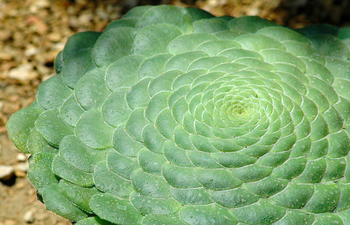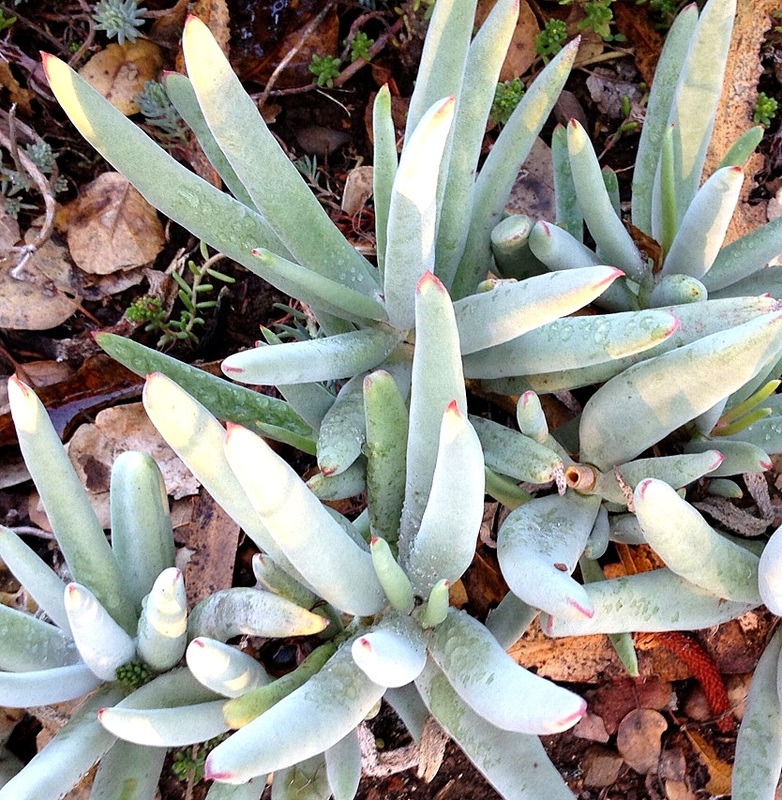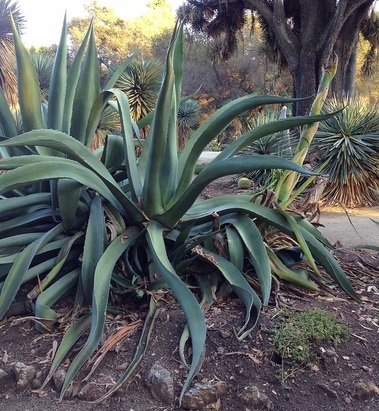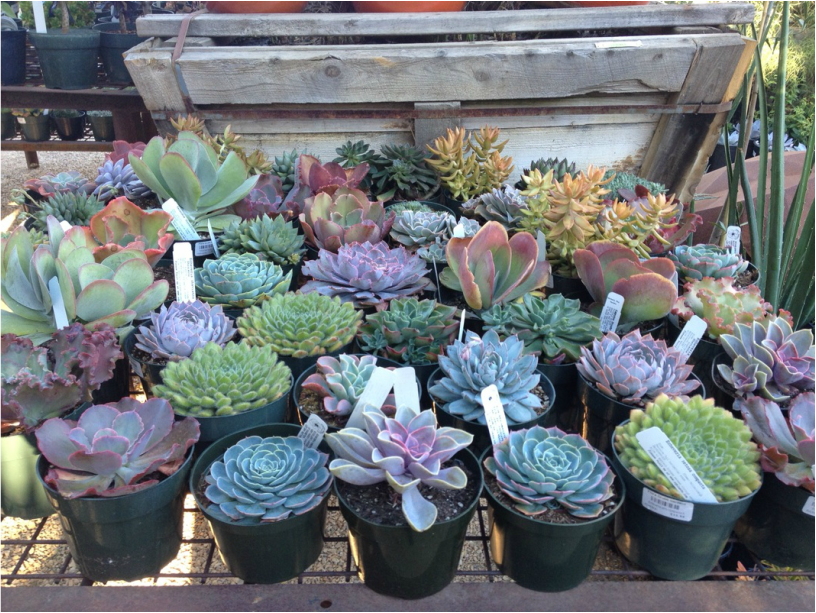|
As promised, here are some photos from my most recent visit to Stanford's Arizona Garden, which has many, many, many varieties of cacti and other succulents, including agaves and aeoniums. The garden isn't huge, but it's well-maintained and worth a visit. Nothing there is labeled, but in some of these pictures, I'm venturing a guess. If you click on the smaller pictures, you can see a larger version. (If you're in Palo Alto checking out the Arizona Garden, I recommend checking out the Gamble Garden as well. It's just a 5- or 10-minute drive away.) Have any of you ever been to the Arizona Garden? What did you think of it? Any other must-stop succulent destinations on the peninsula?
I went to the Arizona Garden at Stanford University not long ago. I'd been there a few times before--it's a wonderful place to check out all kinds of agaves, cacti, and crassulae especially. Soon, I'll post a few more pictures of my most recent visit. But first, I was wondering if anyone can help me identify these two agaves. I didn't notice them on my last visit (perhaps I was less agave-aware then?), and they both caught my eye immediately. This one stood about two feet tall and almost as wide. The leaves were covered with a white powder that didn't brush off very much when I touched it: This second one is also gorgeous. It actually looks a little like my agave blue glow, both in the blue-green color of the leaves and in the outlining of the leaves--except that instead of being outlined in red like a blue glow would be, the leaves of this one were outlined in white. Can any agave aficionados out there help me out? I'd love to know what these are!
 via floragrubb.com I know I can't be the only succ-er out there who keeps a mental wish list of the plants I'd love to acquire. I thought I'd share a few with my fellow succ-ers. First up: aeonium tabuliforme (left). These wonderful aeoniums usually grow flat against the ground, like lily pads. I love the texture. They occur in crested form, too.  via farm5.staticflickr.com I have a particular affinity for haworthia, though I only own a few. I am particularly taken with haworthia truncata (right), and would love to add one to my collection. Supposedly there's no common name for these, but I think they should be called "green book stacks." Don't they look like a stack of tomes with the spines facing you? The bigger they get, the more they look like a mountain of books!  I have a beautiful agave blue glow, and would love to add its sister plant, the agave blue flame. These guys are absolutely stunning. At left is a picture I look at the Succulent Extravaganza at Succulent Gardens in Castroville, CA last month. They had a whole row of these, planted above a huge bed of blue glows. The effect was awesome. Blue flames look like living sculptures, and the color is intense!  via kambroo.com Lastly (for now!) is a funky, whitish crassula known as "crassula deceptor." I haven't spotted it in any Bay Area nurseries yet, but I have a feeling that if it's introduced, it's going to catch on big. If anyone knows what the "deceptor" refers to, let me know--I'm curious. So those are just a few of the plants at the top of my list. As you can guess, there are plenty of others (and don't even get me started on crested and variegated forms--drool!) Now I want to know what plants are at the top of yours. Come on, succ-ers--let's hear it!
Somehow, I managed to confine my purchases to a single euphorbia obesa for my girlfriend... this time, anyway. What other places in (or near) the Bay Area should I be sure to check out?
I've decided to share some reviews of succulent books that I've found especially helpful. As you can see, I have a new tab above, titled, Books that Succ. I hope you find it useful. Check back often for updates, and if there's anything you'd like me to review, let me know! (You can click on the pictures of each of these books for a link to their Amazon pages.)
|
|
























 RSS Feed
RSS Feed